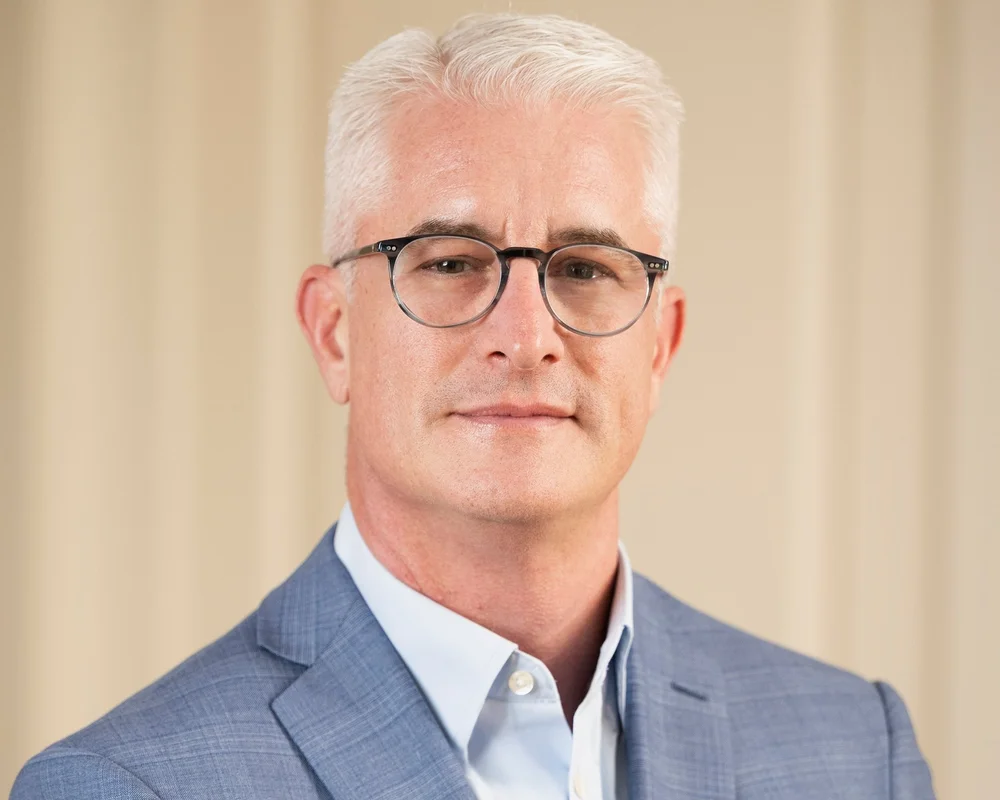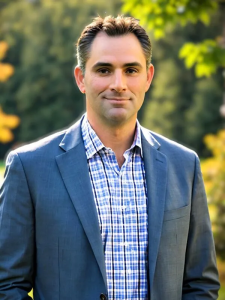 With the rise of the cloud and the growing influence of AI driving infrastructure decisions around the world, new entrants are emerging to build the next generation of internet infrastructure. One such new entrant is Lightstorm, which has rapidly built out DCI infrastructure in India and Southeast Asia in just the last few years. With us today to talk about Lightstorm’s approach to networking for the hyperscale era is CEO Amajit Gupta. Prior to co-founding Lightstorm, Amajit helped run Microsoft’s cloud networking infrastructure.
With the rise of the cloud and the growing influence of AI driving infrastructure decisions around the world, new entrants are emerging to build the next generation of internet infrastructure. One such new entrant is Lightstorm, which has rapidly built out DCI infrastructure in India and Southeast Asia in just the last few years. With us today to talk about Lightstorm’s approach to networking for the hyperscale era is CEO Amajit Gupta. Prior to co-founding Lightstorm, Amajit helped run Microsoft’s cloud networking infrastructure.
TR: What are the origins of Lightstorm?
AG: Lightstorm was born just a few months prior to when the pandemic started. After having spent a few decades working across cloud, fiber, IT, and telecoms, my co-founders felt there was a need for a specialized network for the cloud. And when you juxtapose that with the emerging Asian markets in which we are based, the problem (and its flipside, the opportunity), just looks so real and so big. The network of the day wasn’t built for the cloud, it was built for people to speak over mobile phones and towers. So we decided that if nobody else, including the very large incumbent telcos, is building it, then we would give it a try. We spoke to the cloud guys and looked at how they would adjust their cloud offerings to work past suboptimal networks. They were dumbing down the bells and whistles of their products just because the networks here weren’t adjusted to give a high-quality experience. We thought that was counterintuitive. So back in January 2021 we built our first ever network, all of 200G capacity, to connect Mumbai and Delhi for one of the largest hyperscalers in the world. And we demonstrated our thesis that you could build a very high-quality cloud experience, provided the network was bespoke for the cloud.
TR: What layers of infrastructure do you focus on?
AG: Our thesis was to build this network almost like the full vertical stack. At the bottom is fiber, and so we build fiber, manage fiber, lease fiber, buy fiber, and operate fiber. We operate about 70,000 plus kilometers of fiber across India, Indonesia, and submarine circuits connecting the US, Guam, Japan, and Australia. Some of it we purchased via an M&A, some of it we dug and built, and some of it we did via innovative models like building out fiber on electricity towers in India. Anything under the ground in India is subject to destruction just because the nation is all getting built. So cuts and linearity lend itself. So fiber is one of our core competencies.
Then we do the optical transport, or layer 2. As of this date, we are running about 150Tbps plus, and almost 200Tbps plus including submarine. That will rise to 700-900Tbps in the next six months. We even built software on top of that which essentially manages the switching of waves automatically off a pane of glass. It’s like our fungible Network-as-a-Service, but at layer two. We have also applied that software to layer three which switches both point-to-point as well as cloud to cloud, and DC to DC for enterprises.
TR: What is the status of the transaction for the JGA North and SEA-US subsea assets you recently announced?
AG: We are passing through the last rounds of approvals. So we stop short of calling those assets Lightstorm just yet. But we’ve taken control of the debts of that company and passed it through an auction system where we legitimately were awarded the rights to the company. As soon as we get all the checks on the right boxes with all the regulatory and legal approvals, we’ll declare it as rightful equity owners.
TR: What new infrastructure are you investing in today?
AG: We still have substantial work to do in our home base of India. We have built what we think is almost a third operator in this country. We want to replicate it in Indonesia, and that work is half done. Then, along with our acquisition from RTI, eventually we want to create a fabric which crosses borders across Southeast Asia: Thailand, Malaysia, Singapore, India. We have already connected Bangladesh and Nepal into India, and we carry about half of the internet traffic from those two countries on our network. we are fully owned by right now a US private equity firm called I Squared Capital,
The other thing which we’re exploring is to connect India westward. We think the Middle East is a great opportunity with a lot of problems to solve, including in the Red Sea. Most of the Middle East is very attractive, but it is also regulatory-guarded,. I think all these players do a great job in their own way. But we’re trying to fill holes wherever they open up. We have an office in Dubai with seasoned people looking after that region.
TR: How do you view M&A as a means to expansion for Lightstorm going forward?
AG: When Lightstorm started, we were greenfield. Perhaps it was one of the first greenfield investments I Squared, as opposed to the more typical M&A and leveraged buyouts which private equities do. As we went along, we made decisions according to the value of the opportunity which we came across across. So in India, we built greenfield. In Indonesia, we started with brownfield, which is a small acquisition of a stranded asset which we cleaned up and ran. And now recently we did two M&As, one of which was for JGA and SEA-US. Similarly, we acquired an IPTV FTTx company in Indonesia in the middle of last year. So in addition to the data center interconnect formation in Indonesia, we have also built something unique: a carrier-neutral access FTTx fiber company called AsiaNet. It’s a fiber company with access to about 500,000 connected homes connected and 1.5M home passed. But we are offering it to multiple brands to stream to it, while we collect a fixed fee almost like a neutral fiber operator. While we don’t own the brand and we don’t own the customer relationship, we own the infrastructure.
TR: Is that something you might find doable in other geographies?
AG: You have to look at the numbers. If an average broadband home in the US would end up paying about $70/month, in Asia that number shrinks to $40, $30, or even $5 in India. Even purchase-power-parity adjusted, for the same amount of services it’s a very uneven balance of revenue and a hard business to make work. Fixed-line investments are deep-pocketed and the payback is long. What we chanced upon was this concept of shared infrastructure. We found a sweet spot in Indonesia where it turns out that you can’t make money with just one anchor, with but about 1.6, 1.5 anchors you start making steady returns. It’s early days, we’re going to test that model out. Hopefully, if we find similar opportunities in other countries we’ll do that.
TR: It sounds like you have plenty of projects in mind. How will you approach funding the next phases?
AG: It’s easy to find investment, but it is very difficult to find good investors. We are actually blessed that we have a very like-minded investor who understands infrastructure investments. We are entering our fourth year of operation. We have raised and deployed hundreds of millions of dollars. We have taken care not to be speculative in our investment and to be really careful to make sure that we quickly hit the cusp of making money. That is not really something the telco industry is reputed well for. We took it upon ourselves to make sure we break even and generate cash, which we did within the first two years of our operation. That means we are cash-sufficient. Now, it’s a little more challenging because now we need to grow and consolidate while remaining consistent with the ambitions which we have. That will probably call for fresh capital again, in a bigger round. We’re hoping that we’ll be able to build that on the basis of the financials we’ve built in the first stage, and of course, do the right thing for our existing investors.
TR: India historically has not been one of the easiest marketplaces for new entrants in telecom and internet infrastructure. How have you approached the process?
AG: India has been widely reported for not really being the best for large entrants, and most entrants have struggled. But some new startups have really done phenomenally well, like Reliance Jio. I think we find most of Asia markets today fairly decently open-regulated. There are not too many big bottlenecks. There are some on subsea and landing sites, and on the foreign investment limit side. I think the idea we have been always obsessed with is to find the niche where we could deploy what we are best at. We are best at deploying good capital, great technology expertise, and also an understanding of actual problems to solve from the ground up. The niche we have found is simply that data centers need to be connected really, really well. The cloud guys really deserve a network which is up to their standards. And our hope is there are many such evolving niches working out, because that levels the playing field with the incumbents. So far, we’ve been very successful in our niche.
TR: As a part of the I Squared portfolio, to what extent do you coordinate or interact with their other infrastructure companies like BDx, EXA, and HGC?
AG: Yes, we have a common shareholder or the common largest shareholders, but that’s not to say that every shareholder is the same. We work as independent arms-length entities within the common parentage. But if you just geographically juxtapose the names, you’ll find there’s a pattern. Exa operates in Europe with Hibernia touching the Americas, which is the submarine route. I just mentioned only up to the Middle East, because Exa is expanding there and we would like to connect to them. Likewise we could connect to HGC in Hong Kong. We have a lot of potential synergies in terms of putting together programs at a carefully guarded arm’s length. We do talk to each other and can have common set of customers, and we sometimes synergize across common backends and so on and so forth.
TR: What trends do you see in network automation and similar technologies going forward?
AG: First, today 9 out of 10 bits on anybody’s network is actually cloud traffic. The cloud is built to certain fundamentals. But it is built to change, as opposed to being built to last for 100 years. The cloud is very fungible, very elastic, and very malleable. Networks haven’t been built that way. Second, whether it’s food, medicine, a car ride, or a hotel, everything is uberized, meaning that the services and the service provider are two different layers. It just so turns out that in telecoms, it’s not there. The service is offered by the service provider, and there is no ‘Uber’ to offer a cross-transport feed. One of our passions is to write this inflection of new services, particularly with the arrival of AI, and really transform telecom networks to a network as a service in its truest form and ‘uberize’ network functions. We recently were awarded the most innovative product in telecoms/NaaS for our product Polarin. We think that’s a space which should now evolve much more rapidly beyond the hype phase of what was earlier known as software-defined networking or SDN. It has been far too long. Telcos have been bothered about their legacy networks to bother about SDN and how it could change value perception and deliver real value customers.
TR: What broad trends should we be watching in the infrastructure sector in this part of the world?
AG: The important trends this region are about the scale of cloud adoption. It is the perfect timing for a region in which you have so many young people. India and Indonesia alone have maybe about 700 million people who are less than 25 years old. The digital propensity is so high. The adoption is just mind-boggling. But as the cloud grows, the underlying infrastructure is nowhere near as reliable, predictable, or sometimes even built out. I think it’s an opportunity of a lifetime for most companies operating this part of the world, but it’s also one of the most difficult opportunities to crack.
TR: Thank you for talking with Telecom Ramblings!
If you haven't already, please take our Reader Survey! Just 3 questions to help us better understand who is reading Telecom Ramblings so we can serve you better!
Categories: Cloud Computing · Fiber Networks · Industry Spotlight






Discuss this Post